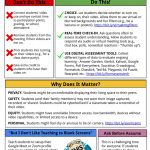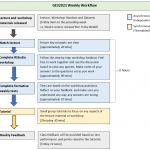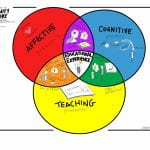 Welcome to Create your ModuleIn this series, we’ll extend some of what we have looked at in Blend your Module, and also spend some time examining Dundee’s Exemplary Module Framework, so that you can best present the content to the students.
Welcome to Create your ModuleIn this series, we’ll extend some of what we have looked at in Blend your Module, and also spend some time examining Dundee’s Exemplary Module Framework, so that you can best present the content to the students. 1: What can the Module Template do for you?What's actually in the Exemplary Module Framework? How can it help us structure our modules to be effective and efficient for both staff and students.
1: What can the Module Template do for you?What's actually in the Exemplary Module Framework? How can it help us structure our modules to be effective and efficient for both staff and students. 2: CommunicationVery few of us learn effectively without communicating with others – whether they’re experts, peers or critical friends. To support our students, we’ll be looking at ways of supporting effective communication and Interaction.
2: CommunicationVery few of us learn effectively without communicating with others – whether they’re experts, peers or critical friends. To support our students, we’ll be looking at ways of supporting effective communication and Interaction. 3: AssessmentWe’ll be looking today at both formative assessment or, as it’s also called, assessment for learning, and summative assessment.
3: AssessmentWe’ll be looking today at both formative assessment or, as it’s also called, assessment for learning, and summative assessment. 4: Teaching Materials and ResourcesFor many staff, a significant part of the preparation for teaching is preparing content - whether that's pre-recorded videos, resource lists compiled primarily from library material, material staff have created themselves or OER content that's relevant. We'll try to find some pointers to help ease this process, while ensuring the content is engaging.
4: Teaching Materials and ResourcesFor many staff, a significant part of the preparation for teaching is preparing content - whether that's pre-recorded videos, resource lists compiled primarily from library material, material staff have created themselves or OER content that's relevant. We'll try to find some pointers to help ease this process, while ensuring the content is engaging. 5: Active and Social LearningHumans are innately social, most people need others to share ideas with, to learn from, and to generally engage with while learning.
5: Active and Social LearningHumans are innately social, most people need others to share ideas with, to learn from, and to generally engage with while learning.
Create Your Module
Reading Time: < 1 minutes

